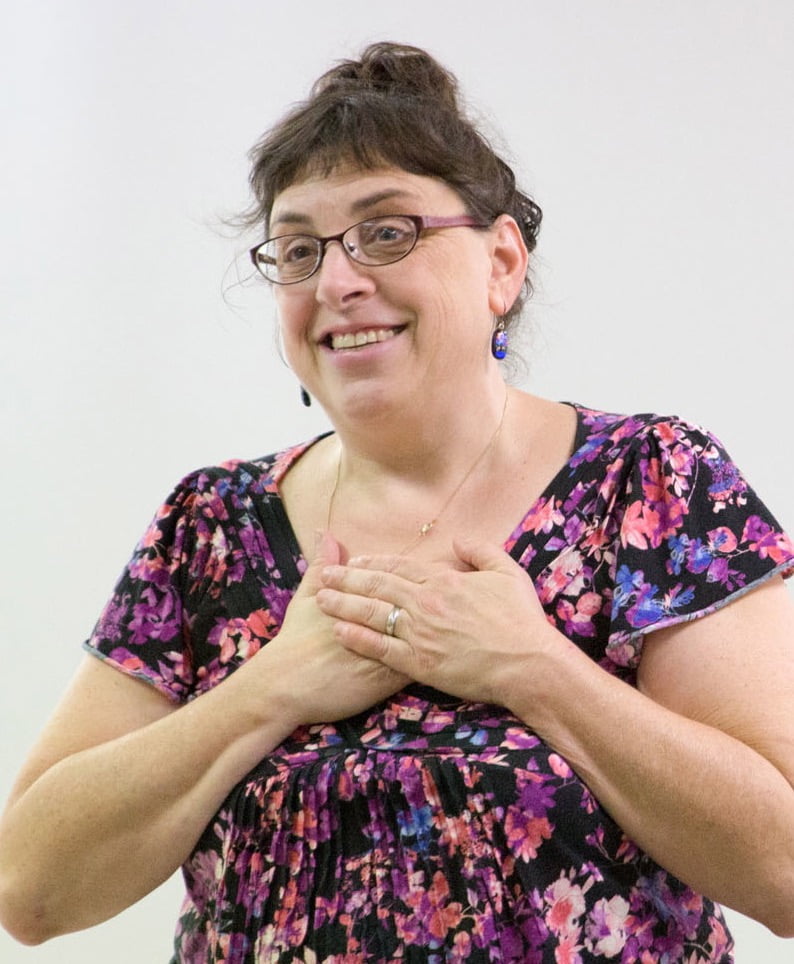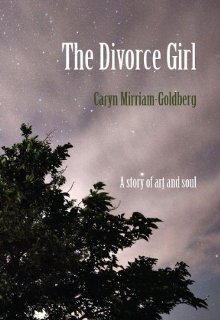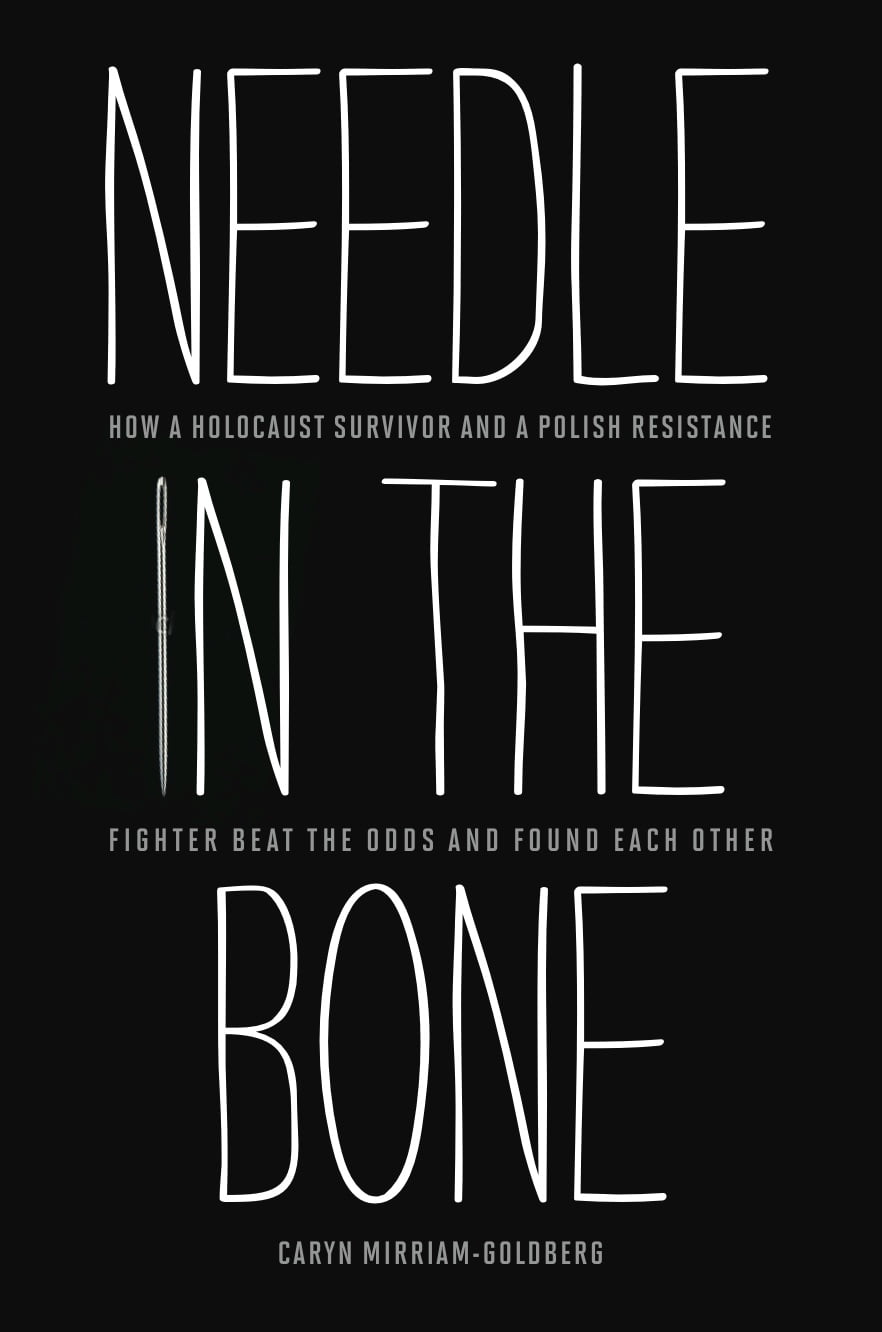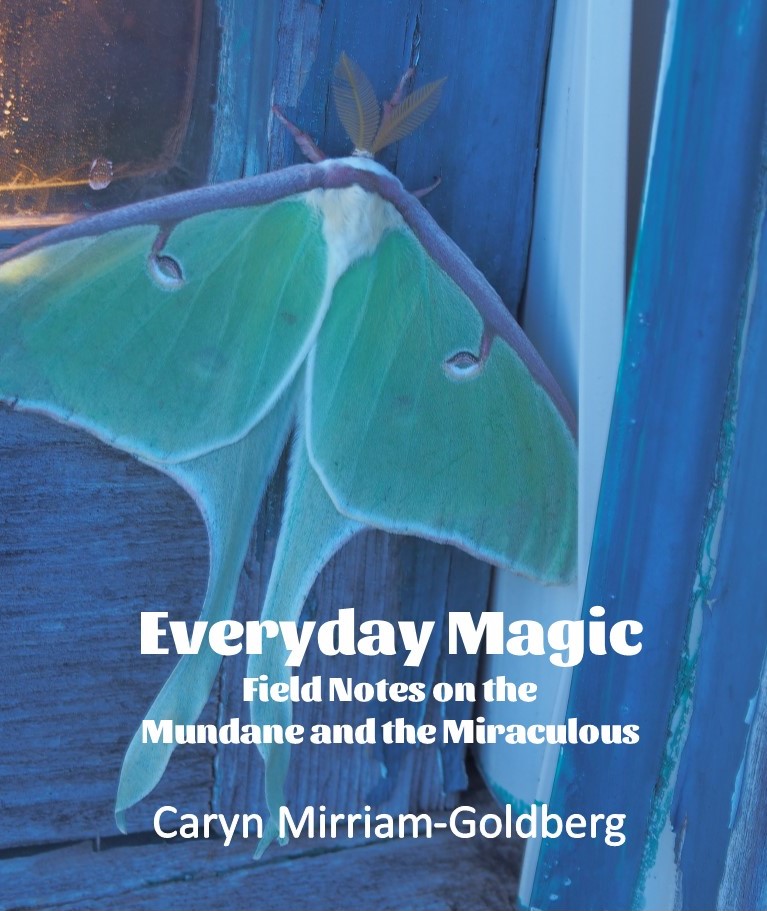Welcome, Caryn Mirriam-Goldberg to Written in Kansas! It’s quite an honor to have you join us – I’ve been a fan of your work for many years. You’ve written at least a dozen books of poetry, fiction, and memoir. You’ve put together anthologies. You were the Kansas Poet Laureate during the challenging Brownback years. You’re a Kansas Notable Book Award winner. We are delighted to have you here, Caryn! Let’s get started.
1) How old were you when you first thought about becoming a writer?
I was 14 when I started writing all the time after years of drawing and painting all the time. I switched in a flash when, in the middle of my parents’ long divorce, I sat on a stoop outside and wrote a poem, then couldn’t stop myself from writing more. I think I’m one of those people born to make things — either art or music or poems — and writing became my main way of making meaning as well as art.
2) I swoon at your imagery. I believe I own most of your books, but perhaps my favorite is Chasing Weather, the book you and Stephen Locke put together. Your poems, Stephen’s photographs. You wrote 75 rich and beautiful poems to go with his photos. Each photograph was, in effect, a prompt. For beginning writers, do you suggest using prompts as one of the best ways to get started in writing a piece? 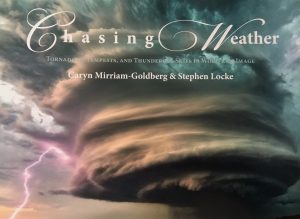
Thank you so much, Cheryl! I love riffing off the work of other artists, such as Stephen’s photography, and it was a joy to stare into his images and find poems. Well, sometimes, it was a hard-won joy as it can be pretty challenging to write a good poem about a large tornado.
Some of the poems already existed, or existed in another version, and I found I could revise them to fit the image, but I also think when working with work by another artist, it’s best to tilt the aim of our interpretations. So I wasn’t writing to explain exactly what was in a photography but to catch some glimpse, often a side-ways glimpse, of what meaning or story I could develop to bring out another dimension of what was in the photograph. For example, one of my favorite images of Stephen’s has all these wild clouds in various stages of development and falling apart, and between them all in a square of open sky. I wrote the poem “Interlude” to fit that interlude of clear sky.
For beginning writers, yes, write to art, write to photography, write to live performances or videos of music or dance or theater. At the same time, listen carefully to what the writing in conversation with this art wants to be, and follow that more than your ideas about what you should write.
3) I often wonder – is poetry your first language? Do you process the world differently than most of us? When you look at a tree, do you ask: what’s another way to see this tree?
I wouldn’t say poetry is my first language, but it’s one of my best. When I look at a tree, and leaning toward a poem, I’m thinking not so much about another way to see this but how to see this more precisely outside my ideas about what it is.
Right now, for example, there’s a large cottonwood outside my window, a volunteer tree that began growing shortly after we built our house 24 years or so ago. I call it Cottonwood Mel after my late father, but when I try to see what it is, at this moment, I’m aiming my gaze toward the delicate way bare branches aim upwards at various diagonal angles, and how the bark looks like the shaggy coat of a yak or something, but much harder. I’m trying to see what is right here, and I use poetry as a tool to do that so that I can (go) beyond ideas about things and closer to the thing itself.
4) In a writing workshop many years ago, I latched onto one of your comments. You said that you yourself don’t get writer’s block, that if you get stuck on one project, you just move on to another project – that you have several works-in-progress at once. I can’t tell you how valuable that concept has been for me. Because of that, I tend to have 3-4 projects going. For any writers who feel blocked, do you have additional suggestions on how to get unblocked?
Yup, I don’t think we need to embrace the notion of writer’s block, which is not to say that sometimes we can’t find the right way to finish or start something. But by re-interpreting that moment as something more like, “Well, I’m just not ready to do this at this moment, and I’ll come back to it,” then do something else, we can free ourselves from the numbing or torturous impact of being stuck. There’s a lot of unhealthy myths about the writing life, including and especially that the writer needs to be constantly tormented, and I reject those myths as much as possible.
What to do if you’re not ready to write something, if the thing itself isn’t ripe for showing up on the page? Write something else, take a walk or nap, drink some very cold water or hot tea, watch a TED talk, play some loud fiddle music, open a book and begin reading, and in short order, take the pressure off yourself. That pressure can cause you pain and also, it will absolutely shut down the possibility of new growth coming through. I like to work on numerous projects at once too, and I just go where the energy is. Although I spend many years on each book, the books get done eventually, and it can add up to a lot of books.
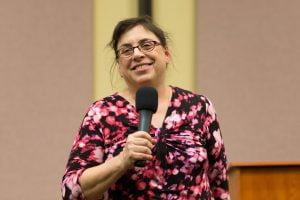
5) You’ve taught writing for many years, at KU, at Goddard College in Vermont, in countless workshops, and in private coaching. Is there any one universal struggle that writers seem to face?
That’s a hard question, but what I hear often has to do with a lack of confidence that we have something worthwhile to say that others will want to read. As much as possible, I encourage people to put that question on the shelf because unless you do the writing that communicates what you have to say, you’ll find the answer to the question. Writing for publication is a daring act — what you do may or may not connect with some or many people. But if you don’t write as if you have the possibility to reaching at least one person for whom this writing might make a difference, then it’s hard to get going with the writing or to sustain it over time.
I also suggest to people that they can answer the question of whether the writing will matter with the phrase, “So what?” Writing it will matter to you, the writer, and it will likely help you see and understand the world in a more vibrant way, so that alone is a good reason to write. Readers connecting to your work is a bonus.
6) After time, writers learn they don’t have to be “in the mood” to write, but for less-seasoned writers do you have any suggestions to get them in an appropriate mind-space for writing?
I don’t believe in waiting for inspiration but in showing up, writing, and assuming that sooner or later, I’ll feel inspired. I’ve done some of my best writing when I wasn’t all that moved to write or even when I didn’t feel that great. Eleanor Roosevelt once said something about how the people who change the world often aren’t feeling at their best when they do the work. Just showing up and writing — whether it’s creating something new, revising older stuff, planning for potential essays or books — is what invites in the images and stories, the writing that just may change your life in some good way, and the writing that can matter to others.
So I suggest to writers that they create their own writing prompts, such as a running list of every moment in their life they want to write back, and then, when it’s time to write, pluck something off the list, and write it. You might be writing something you love or priming the pump for the next time.
7) Your novels “Divorce Girl” and “Miriam’s Well” were novels that you worked over a period of many years. You believed in them and brought them into final form. Is tenacity a good quality for writers to develop – and/or – is there ever a time for a writer to say “hey, this isn’t working,” and to discard the project? How does one know whether to stick with a project or to let it go?
 Writing any book, whether it’s a novel or collection of poems, can easily take years, and I’ve spent something like 10-15 years each on many of my books. I felt drawn to them, so I kept going, working on several books at time so I could go where the energy is. Yet I also have some books aren’t aren’t completely coming together in a way that compels me to work on them until they’re ready for publication, and I think most writers have such files on their computers. How you know is only in retrospect. My non-active book projects are all things I believe I’ll finish eventually, but I don’t know for sure at the moment.
Writing any book, whether it’s a novel or collection of poems, can easily take years, and I’ve spent something like 10-15 years each on many of my books. I felt drawn to them, so I kept going, working on several books at time so I could go where the energy is. Yet I also have some books aren’t aren’t completely coming together in a way that compels me to work on them until they’re ready for publication, and I think most writers have such files on their computers. How you know is only in retrospect. My non-active book projects are all things I believe I’ll finish eventually, but I don’t know for sure at the moment.
8) You were Kansas Poet Laureate when then-governor Sam Brownback eliminated the funding for the Kansas Arts Council. During that tumultuous time, you maintained the position (at your own expense?) to keep the poet laureate program alive, to keep bringing art to the residents of Kansas. Thank you. As an ambassador of the arts, how did those years change you? Is there anything we, as residents, can or should be doing now to maintain and develop the arts in our communities?
When I was a few years in my appointment at the poet laureate and the arts commission vanished — very suddenly — I was at sea, but I reached out to others for support and encouragement. Through a crowd-sourcing campaign, I raised funds to continue on, and those funds, and even more so, the love and inspiration people shared kept me going. I had a long stretch of trying to get the governor’s office, which owned the title “Kansas Poet Laureate,” to sign off on handing the program over to Humanities Kansas, which was interested and has since carried on the program beautifully.
What I learned — or more what I knew somewhat and got to know much more viscerally — is that writers and artists in Kansas are amazingly resilient, we have a lot of power together, and sometimes you have to dwell in uncertainty for a long and anxious time.
Speaking up and coming together is key to keeping the arts alive in our communities, and this means simply not taking “no” for an answer. The word “no” is very powerful, but refusing to accept it can be even more powerful, especially when you’re growing that resistance to “no” and advocacy for a”yes” with others.
9) When I attended one of your small writing retreats earlier this month, I so appreciated how you and your husband created such a warm and encouraging environment. Every time I’ve seen you, you seem to be an embodiment not only of writing wisdom, but of calm and inner peace. Is there a practice you have to find and maintain that calmness? If so, how does that practice help you when you sit down to write?
I find some measure of calmness through writing, coaching, teaching, and facilitating — simply warming my hands around the fire of what we can create with words and how it can bring our lives greater meaning, joy, and vitality.
10) You are a writing coach and help writers bring out the book that is within them. Can you share with us some information about the coaching services you offer?
I love sitting alongside writers and helping them see wider possibilities in their work, including various ways to hone their craft, embrace revision as a lifelong romance with words, and following what daring edges call to them. I also believe so much that we surrender our will to what the writing wants to be and also that the writer has the best connection to hearing that. So I work with people to develop their own critical sense so that they can better guide themselves.
I offer coaching services for people who want to write and need structure and ideas to get going as well as people who have been writing for years and could use an inspirational tune-up of some kind, including having me look over manuscripts and give them in-depth feedback on what works locally (in each specific section) and globally (the whole manuscript), what revision possibilities are calling, and how they can move into finding their best way forward, step by step.
I also coach people on right livelihood through the arts, such as how to design and facilitate workshops, put together a business plan for making a living in the arts, and more, and I do some of this through the wonderful Right Livelihood Professional Training I do with storyteller and consultant Laura Packer (more here: https://www.tlanetwork.org/Right-Livelihood-Training).
11) Each May, you and Kelley Hunt offer a week-long writing and singing workshop in the Flint Hills. Tell us about Brave Voice.
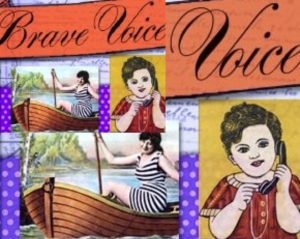 Yes, we’ve been doing this for years, and it’s a great joy! Based on the premise that opening our voice once way cannot help but open our voice another way, we lead people through singing and writing excursions to see what they’re discovering about what they’re called to create and live. Our six-day retreat, held near Council Grove, Kansas, allows the community that comes to go deep and also build great support among themselves for continued creativity in their art and life.
Yes, we’ve been doing this for years, and it’s a great joy! Based on the premise that opening our voice once way cannot help but open our voice another way, we lead people through singing and writing excursions to see what they’re discovering about what they’re called to create and live. Our six-day retreat, held near Council Grove, Kansas, allows the community that comes to go deep and also build great support among themselves for continued creativity in their art and life.
We also have started doing one-day Brave Voices, and soon, we’ll be sharing details of a one-day session this summer in Kansas City. If people are interested, they can drop me a line (carynmirriamgoldberg@gmail.com) to get on my email list, and also they can check out http://bravevoice.com.
12) What writing project are you working on now? Is there anything you’d like to share?
I’m revising poems for How Time Moves: New and Collected Poems, to be published by Meadowlark Books in late 2019 or early 2020. It will house many poems from my previous six collections of poetry, plus include a whole new collection about time, which I’ve been writing about in one way or another for a while. I’m very interested in grappling with what time can mean and how it can change and change us. I’m also mapping out and writing a book about Transformative Language Arts — the field I helped found at and beyond Goddard College — about how writing and witnessing our stories can help us heal the heart of the world.
13) What haven’t we covered here? What else would you like readers to know about you, your books or your teaching activities?
I have a kaleidoscope of workshops, classes, talks and more at my website — http://carynmirriamgoldberg.com, and I invite people to subscribe to my blog (you’ll see a blog sign-up form at the bottom of my webpage) and my monthly newsletter (sign-up at top of webpage), in which I share writing prompts, a featured writer, occasionally books to consider, and more
Thank you, Caryn!
** Purchase Caryn Mirriam-Goldberg’s books at your local independent bookseller. Here in Emporia, Kansas, we shop at ELLEN PLUMB’S CITY BOOKSTORE. Caryn’s books are also available on her website.
Caryn will speak at ESU on March 21, 7 p.m. Webb Hall 2, in the Memorial Union to help celebrate Women’s History Month
Caryn’s talk: “Miriam’s Well: A Reading and Exploration of Midrash, Meaning, and Miracles”
She will draw from her new novel ‘Miriam’s Well: A Modern Day Exodus,’ about finding our purpose, place, and people. An astonishing cook and singer, Miriam has a knack for showing up to feed and help people at at landmark events, including People’s Park during the Summer of Love, the Wounded Knee encampment in South Dakota, the AIDS epidemic in San Francisco, the Oklahoma City terrorist attack, 9/11, and Hurricane Katrina. As she seeks the promised land, she shows her people, and eventually herself, how to turn the chaos and despair of our times into music, meals, and miracles. In addition to a reading from the novel, Caryn will talk about Midrash, finding new meaning in our most sacred stories, drawing on what writer Adrienne Rich calls on women writers to do: re-vision our myths and our lives. There will also be time for questions about the novel, the writing life, and being a writer in the world.

